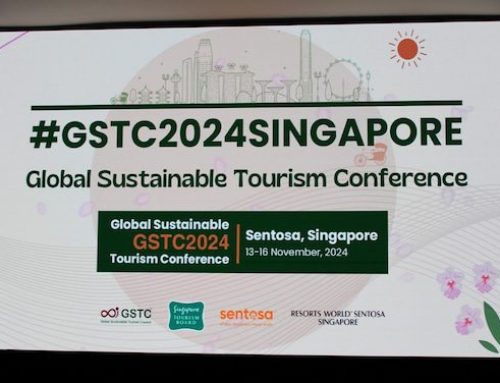Antigua and Barbuda has joined as a Member of the Global Sustainable Tourism Council (GSTC)
The tropical islands of Antigua and Barbuda are located in the heart of the Caribbean about a thousand miles to the east of Jamaica and half that distance from Trinidad on the coast of South America. Antigua and Barbuda are at 17- N latitude, about the same as the Cape Verde Islands and Bombay and 61- W longitude.
The island of Antigua was born out of the sea by a volcano about 30 million years ago. A young island in geologic time. On the northern flank of this volcano, reefs were formed, hence the greater part of Antigua is low lying and is composed of limestone rock. Barbuda became separated from Antigua by about 28 miles, when the sea-levels of the world rose considerably at about 10,000 BC. Today parts of Barbuda are geologically flooded to form interesting lagoons. Here may be seen the largest breeding and nesting colony of the Magnificent Frigate Bird in the world. Barbuda supports a tremendous diversity of native habitats, as yet unthreatened by development. Reef-fringed Barbuda may be one of the best kept ecological secrets in the West Indies. Her rugged scenery, beautiful beaches, (one at least 12 miles long), lagoons and abundant wildlife may be a resource as valuable as its fisheries.
Sustainability in Antigua and Barbuda
To give eco-conscious travellers greater peace of mind, Antigua has established an area on its coastline called ‘The Green Corridor’. Launched in 2017, The Green Corridor stretches along the southwest coast between the villages of Bolans and John Hughes. Businesses both directly and indirectly related to tourism in this designated area have pledged to follow a set of principles based on “respect for local culture, positive influence on the local community, local economic benefits and environmental stewardship”.
In the destination, all green policies are shared with all tourism businesses, and Antigua & Barbuda’s Green Tourism Initiative ensures there is compliance. The key areas focused on include: energy consumption and efficiency, and use of renewable energy; water consumption; waste disposal; green building practices; green operations; promoting local economy; employee engagement; social responsibility; customer education, and conservation practices. Popular beach bars and restaurants within the Green Corridor also offer farm-to-table dining. Additionally, the Green Fins Programme was established in Antigua and Barbuda. These international standards, which provide guidance and support for diving and snorkelling business owners to promote environmental best practices, have been adopted by many marine tour businesses.
“Antigua and Barbuda is committed to sustainable tourism development and has been consistent on this path through collaborations with private, public and NGO stakeholders. Becoming a GSTC member is what we consider to be a major step in that journey which will help to guide us along. We are very excited about this as we seek to advance and promote principles that ensure Tourism is used as a tool for sustainable development.” Hon. Charles Fernandez, Minister of Tourism and Investment.
GSTC Welcomes Antigua and Barbuda
“We welcome Antigua and Barbuda as a member of the GSTC, joining a growing group of National Tourism Organizations, and applaud their holistic approach to destination stewardship,” said Randy Durband, GSTC CEO.
“Antigua and Barbuda have been strategically implementing key elements of GSTC’s destination stewardship framework for several years now, including a Destination Stewardship Committee and a private sector sustainability standard modeled after the GSTC Industry Criteria,” said Kathleen Pittman, GSTC Program Director – Caribbean and Special Projects. “It is a pleasure to now be working directly with Antigua and Barbuda to help take their sustainable tourism programming to the next level.”
GSTC encourages destinations pursuing sustainability practices in tourism to join as GSTC members. Apply the GSTC Destination Criteria and support local businesses to apply the GSTC Industry Criteria. Destinations can eventually aim for achieving certification by a GSTC-Accredited Certification Body as a sustainable tourist destination.
About Antigua and Barbuda
The Antigua and Barbuda Ministry of Tourism manages, directs, and oversees the Tourism Industry in Antigua and Barbuda. To fulfill its mandate, the Ministry is divided into two functional areas: 1. Ministry Headquarters which is responsible for product development including the maintenance of historical sites, quality assurance, sustainable tourism development, research and statistics, and policy development. 2. The Antigua and Barbuda Tourism Authority which is responsible for the marketing and promotion of the Tourism product. The Ministry also has oversight of the St. John’s Development Corporation, the Antigua and Barbuda Investment Authority and the National Parks Authority.





